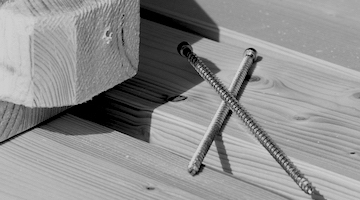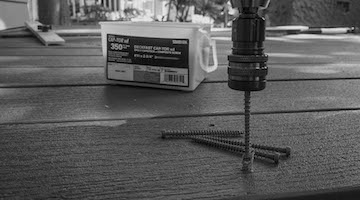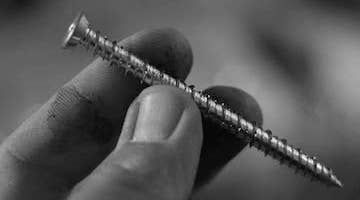- Home
- REPORTS & NEWS
- Concrete Screw Intro
Concrete Screw Intro
Dec 9, 2020Concrete and masonry units such as concrete block serve various purposes in most house designs, including concrete slab and crawl space houses which have poured concrete or concrete block foundation walls of some type. They are used extensively in structural applications across the world, creating a need to anchor other materials such as the foundation wall connecting to wall studs. Anchorage to concrete can be accomplished through a piece of steel, such as a threaded rod, bolt, or proprietary anchor, partially embedded in the base concrete and used to connect additional members. The securement techniques of devices, attachments, fixtures, etc. to concrete or masonry structures has typically utilized stud-like devices which are inserted in a bore or hole preformed in the masonry.
The stud-type anchor must in some way be activated to create a wedging or slight embedment within the walls of the concrete to properly provide suitable pull out strength in such applications. Recent advances in the art of securement to masonry structures have included screw threaded type anchors which threadingly engage the walls of a bore in the masonry or concrete. These come in lots of different designs, sizes, and strengths, but they all complete the same basic task - fastening concrete in a durable and reliable way. Fasteners of concrete anchor are used to connect structural and non-structural elements to the concrete. Improper concrete connection can be dangerous !! Concrete screws are different than all of the others types of anchors because they don’t utilize any expansion to set them in place. Instead, they’re drilled into a hole slightly smaller than their circumference, using their strong and sharp edges to dig into the concrete. Sometime they look relatively simple to use, many people do not realize that concretes are structures that need to be designed to adquately resist certain stresses. Like a building, the foundation must be designed to support the weight of the normal forces, as well as lateral and uplift loads that can act on the concrete base as a result of occupant movement, wind or seismic activity.
.png) It is important to use a proper drill tool or rotary drill in concrete applications. The use of wrong drilling tools or parameters to base material such as drill bit, speed setting, depth setting, may be critical for hole size and depth, especially for the concrete cracking unexpectedly affecting the effective embedment length of the concrete screw. Except drilling the right hole for proper installation the thread design is also the key to give thread engagement to concrete for screw anchors. The interaction of drilling hole size and thread design should have been more seriously concerned than other anchors types of fasteners such as expansion anchors, bonded anchors.They're made from high-grade carbon steel and are coated with an advanced plating that provides long-term corrosion resistance.
It is important to use a proper drill tool or rotary drill in concrete applications. The use of wrong drilling tools or parameters to base material such as drill bit, speed setting, depth setting, may be critical for hole size and depth, especially for the concrete cracking unexpectedly affecting the effective embedment length of the concrete screw. Except drilling the right hole for proper installation the thread design is also the key to give thread engagement to concrete for screw anchors. The interaction of drilling hole size and thread design should have been more seriously concerned than other anchors types of fasteners such as expansion anchors, bonded anchors.They're made from high-grade carbon steel and are coated with an advanced plating that provides long-term corrosion resistance.
Tons and tons of concrete are utilized for construction in the world. While concrete foundation are the main feature of houses, the construction and safety of concrete structure have become a real concern within the building industry. Improper concrete foundation has resulted in a growing number of failures and related injuries and deaths. Multfiform Fasteners Co., Ltd. focuses on the critical connections involved in concrete construction including heavy or light duty load condition.



